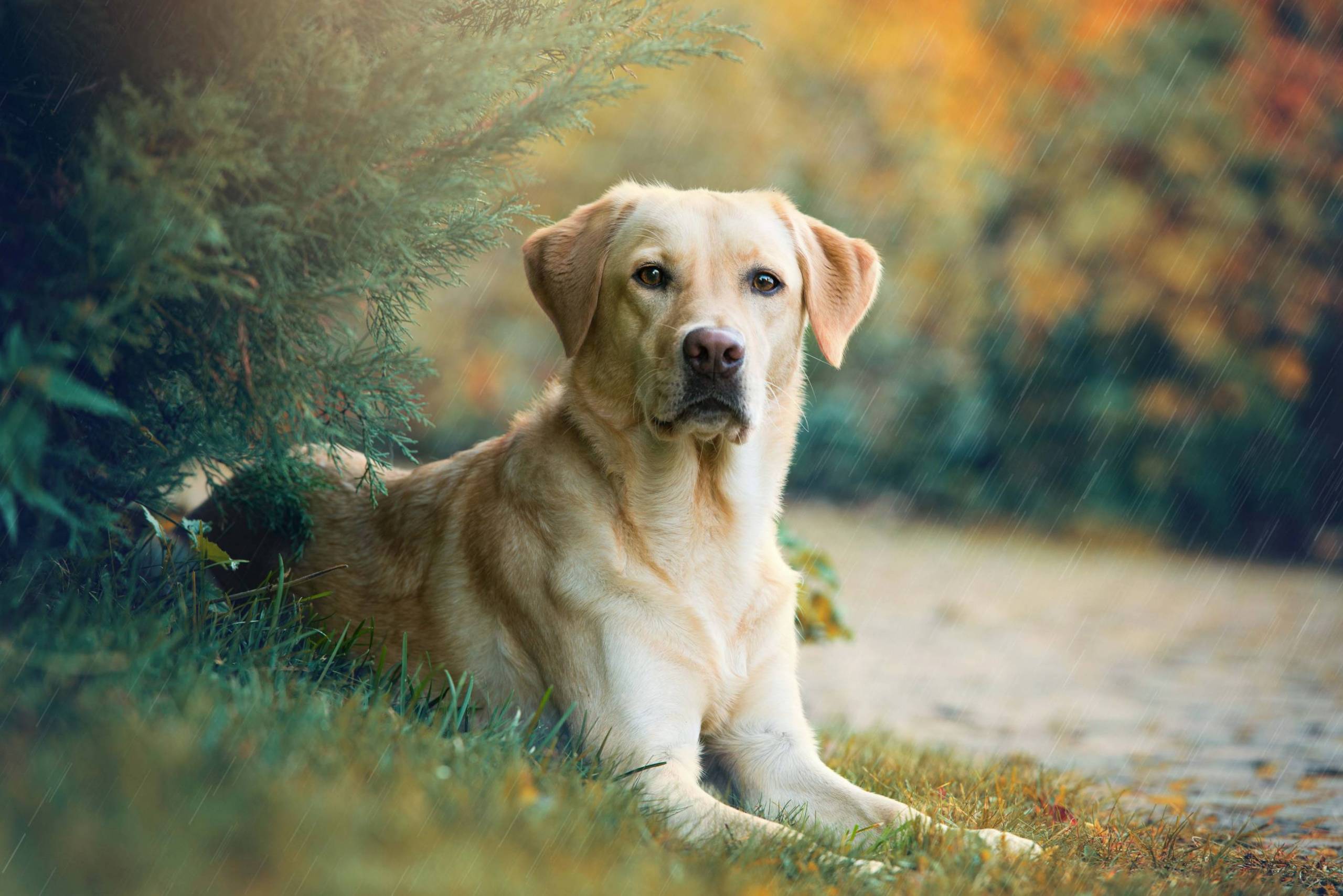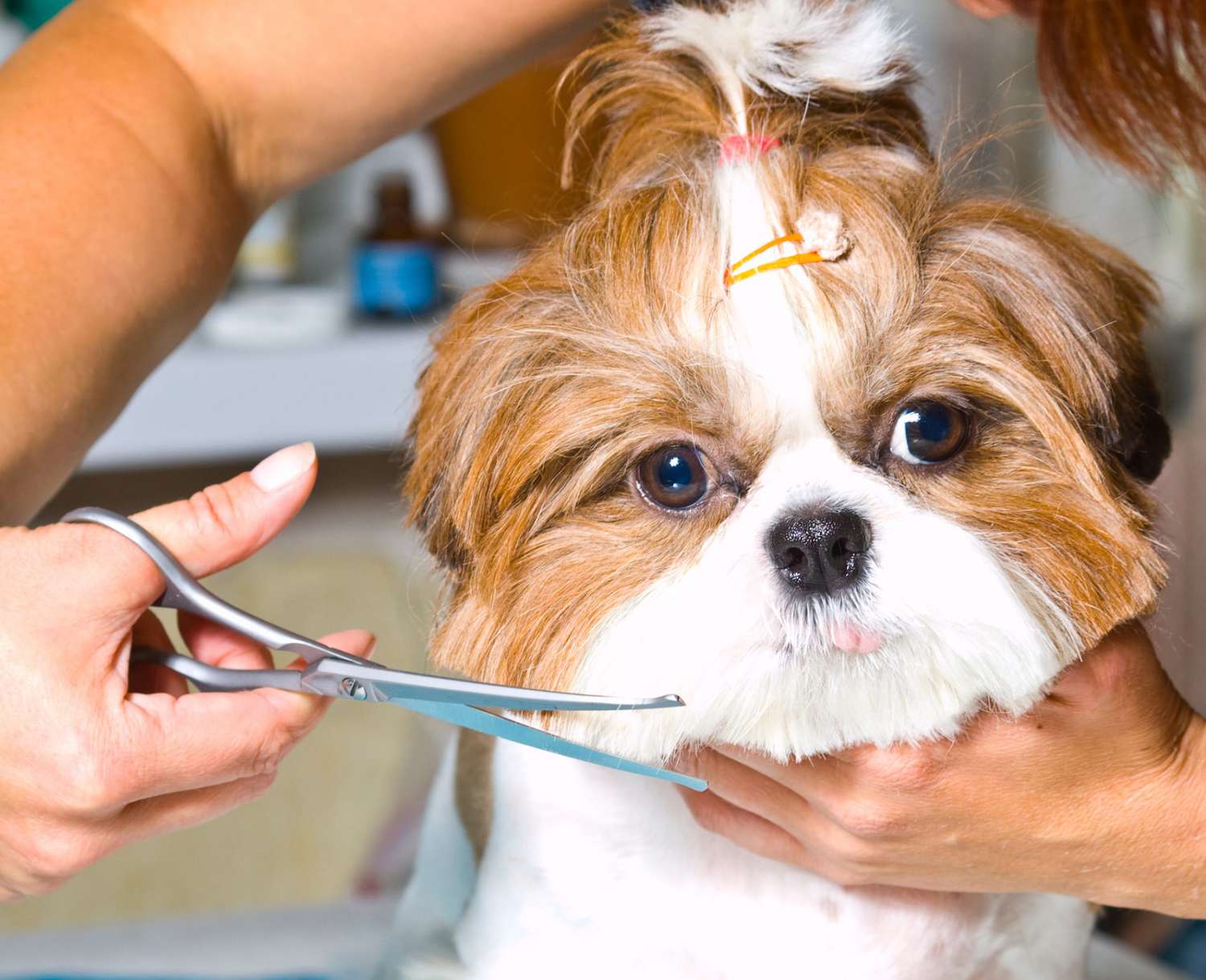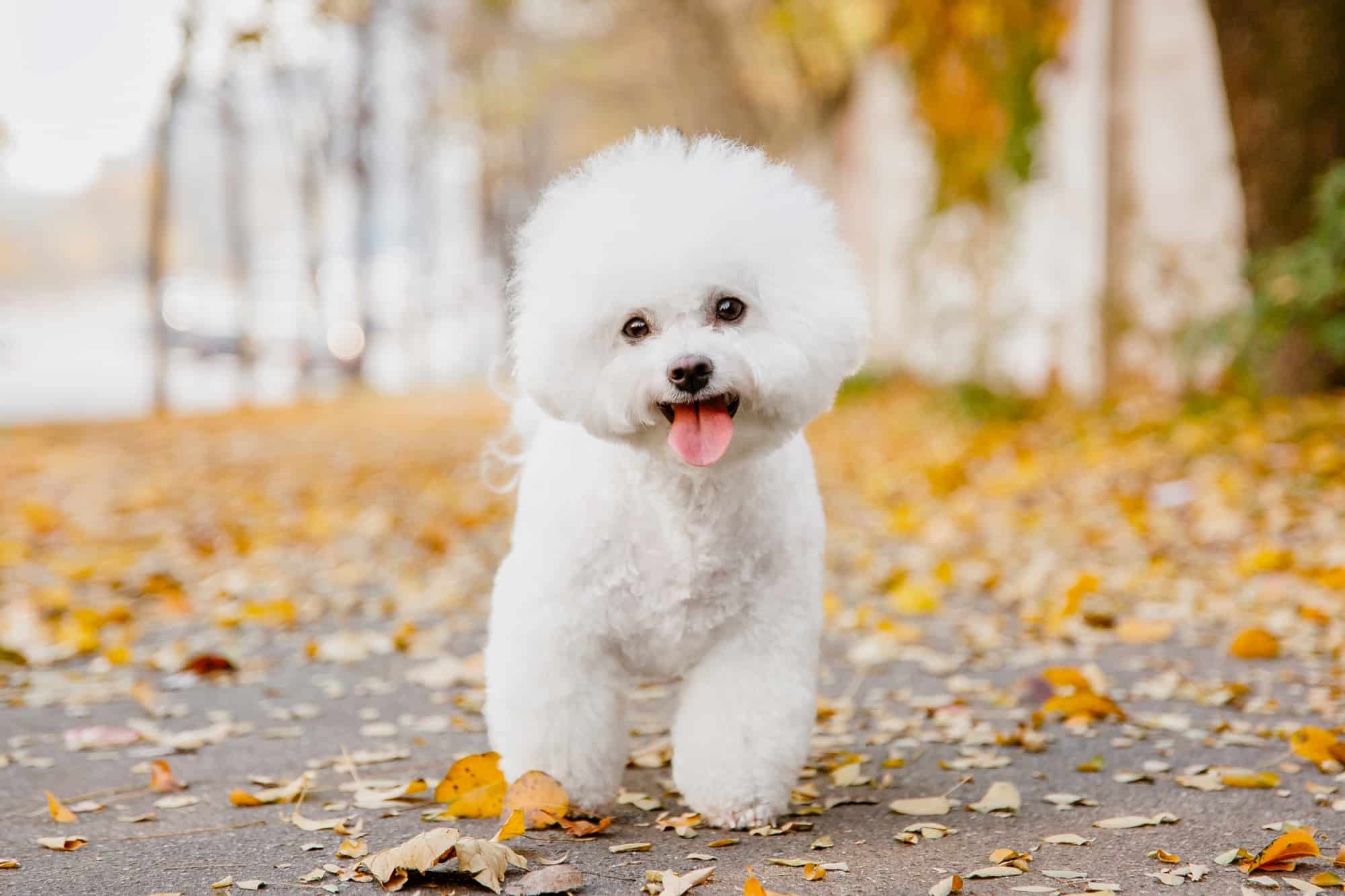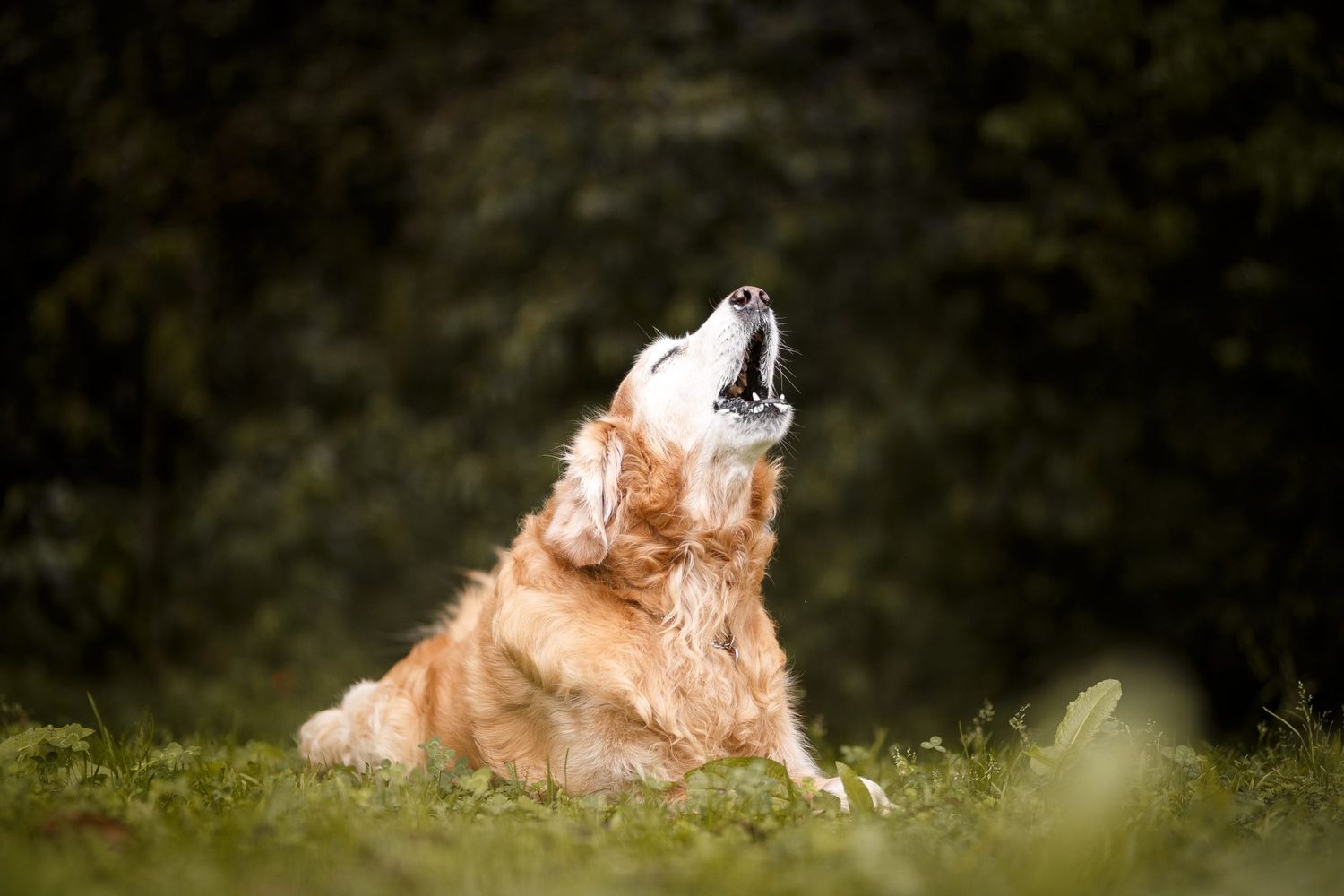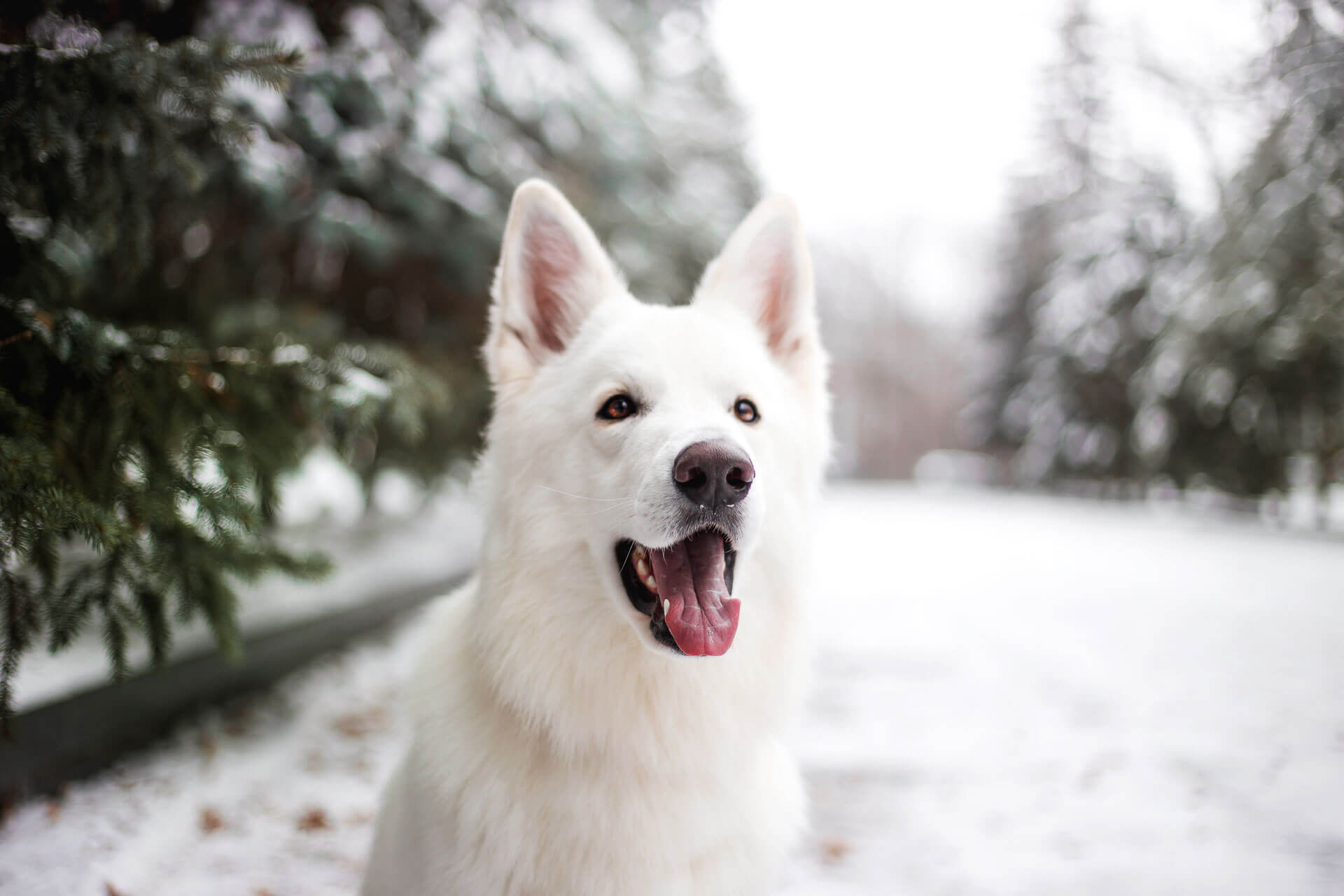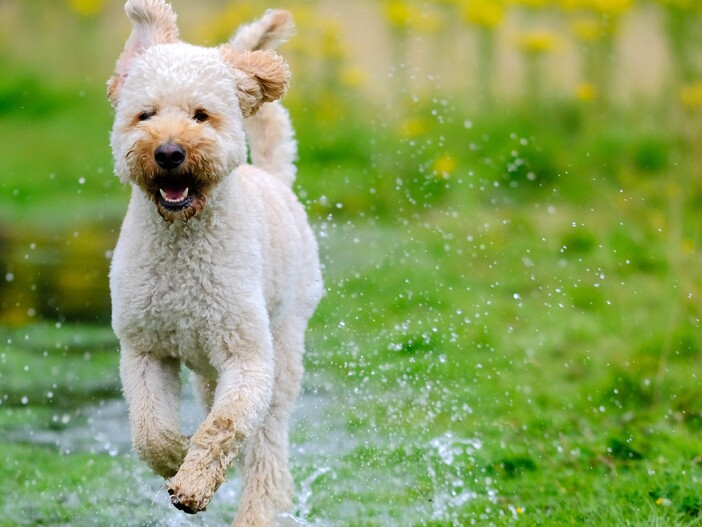In 2023, dog ownership experienced some surprising shakeups, with changes in popularity influenced by various factors such as technology, living conditions, and availability.
While the Labrador Retriever has been the most popular dog breed in the U.S. for over 30 years, other breeds have been gaining traction and capturing the hearts of dog lovers.
You are reading: The Most Common Types Of Dogs For 2023
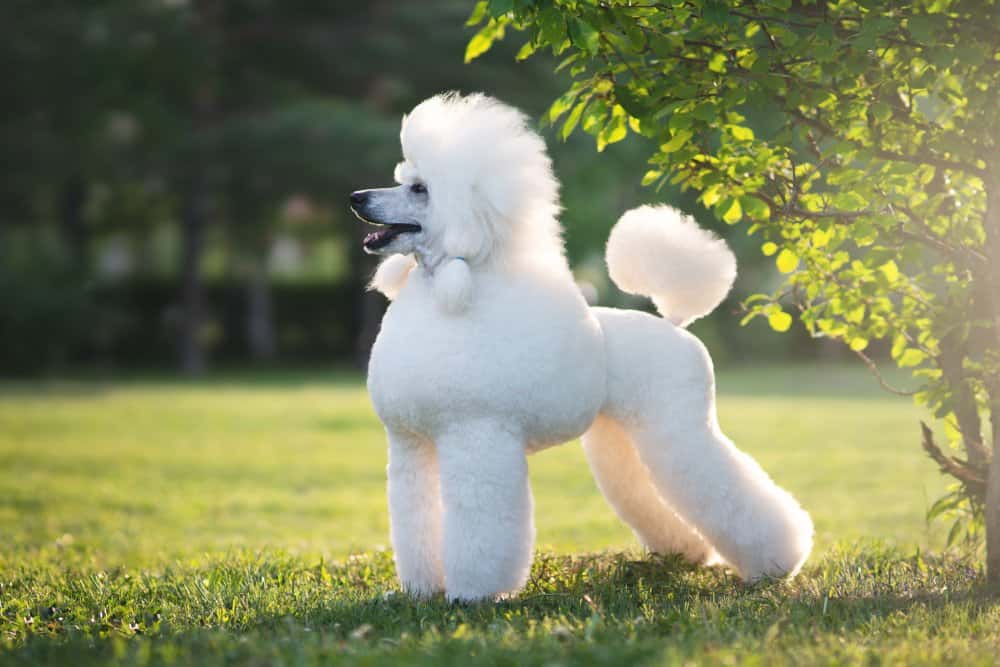
The Most Common Types Of Dogs For 2023
French Bulldog
The French Bulldog, also known as the Frenchie, is a small and affectionate dog breed that has gained popularity for its unique features and playful nature. Here are some key characteristics of French Bulldogs:
– Size and Appearance: French Bulldogs are small but substantial in build, with a powerful muscular body. They have a large head, big round eyes, and distinctive bat-like ears. The breed’s skull is flat between the ears, and the expression is typically alert. They stand 11 to 13 inches (28 to 33 cm) tall at the withers and ideally weigh less than 28 pounds (13 kg).
– Coat: French Bulldogs have a short and smooth coat, which is easy to maintain. They come in various colors, including brindle, fawn, white, and more.
– Temperament: French Bulldogs are known for their affectionate and easygoing nature. They are friendly, social, and often get along well with other pets and children. They are generally accepting of unfamiliar dogs and people but are not exuberant in these situations.
– Exercise Needs: French Bulldogs have relatively low exercise requirements. Short walks and playtime are usually sufficient to keep them happy. They are not meant to be jogging companions but are always willing to go for a brisk walk.
– Training: French Bulldogs are intelligent and training them is easy as long as you make it seem like a game and keep it fun. However, they can have a headstrong temperament and may be stubborn at times, so early training and socialization are important.
– Ideal Living Conditions: French Bulldogs are well-suited for various living situations. They can adapt to city life as they do not require a large yard. They are also suitable for single-person households, as they thrive on attention and may compete for it with other family members.
– Health: French Bulldogs are prone to certain health issues, including breathing problems, spinal disorders, and eye conditions. Regular veterinary check-ups and a balanced diet are important for their well-being.
Labrador Retriever
The Labrador Retriever is a medium to large dog breed known for its friendly and outgoing nature. Here are some key characteristics of the Labrador Retriever:
– Temperament: Labs are friendly, outgoing, and have a gentle nature. They are often described as one of the most family-friendly dog breeds and are great with children and other pets.
– Intelligence: Labradors are intelligent and highly trainable. They have been used as working dogs in various roles, including as fishermen’s helpers, field retrievers, show dogs, and modern working dogs.
– Exercise Needs: Labrador Retrievers are active dogs and require regular exercise and mental stimulation. They enjoy activities like fetch, swimming, and hiking. Labs have a high energy level and like having a job or activity to do.
– Grooming: Labrador Retrievers have a short, thick coat that is easy to groom. They only need to be brushed a few times a week and bathed occasionally.
– Appearance: Labs have a sturdy and muscular build, with a maximum height of 24 inches for males and a weight range of 55 to 85 pounds. They are easily recognized by their broad head, drop ears, and large, expressive eyes. Labs have a thick, water-repellent double coat and a well-known “otter tail”.
– Health: Labradors have a lifespan of 10 to 14 years. They can be prone to gaining weight, so it’s important to monitor their diet and exercise levels. Labradors are also known to shed, so regular grooming can help manage their coat.
Golden Retriever
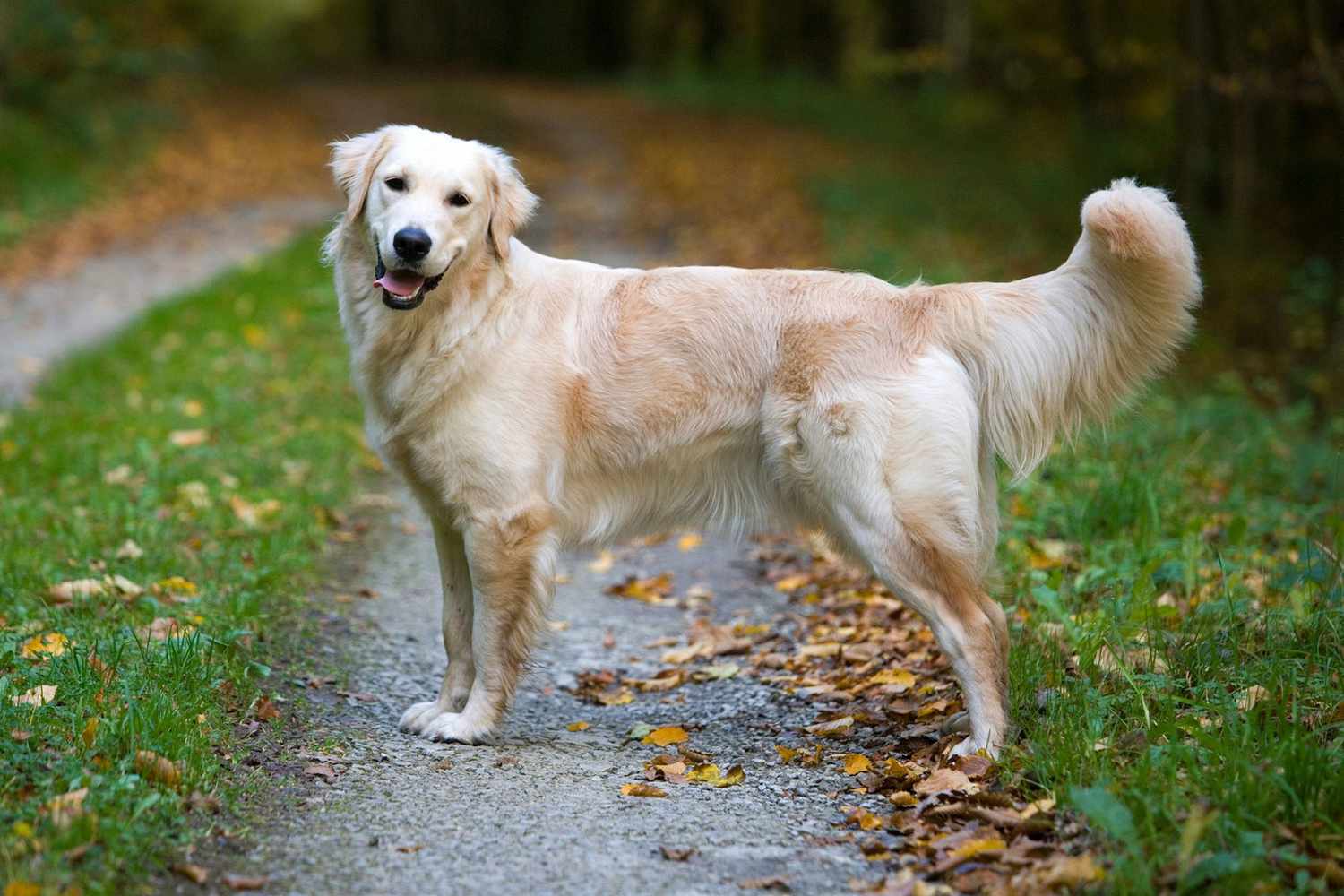
The Golden Retriever is a medium-sized dog breed known for its gentle and affectionate nature and striking golden coat. Here are some key characteristics and facts about Golden Retrievers:
– Physical appearance: Golden Retrievers have a broad head with a well-defined stop, dark eyes set well apart, a wide and powerful muzzle, a large black nose, slightly drooping flews, and ears of moderate size set high and hanging with a slight fold. They have a muscular and fairly long neck, well-laid-back and long-bladed shoulders, and a deep chest with well-sprung ribs.
– Intelligence and trainability: Golden Retrievers are considered intelligent and easy to train. They are generally calm and biddable, making them eager to please their owners. This breed is known for its excellent performance in obedience trials and other dog sports.
– Family-friendly: Golden Retrievers are known for their tolerance of children and their willingness to accompany any member of the family in a range of activities. They are often among the top ten dog breeds in terms of registrations in the United Kingdom, the United States, Australia, and Canada.
– Working abilities: Golden Retrievers are originally a Scottish gundog breed and are still serious workers at hunting. They can also be trained as guide dogs, therapy dogs, and excel in various dog sports such as agility and competitive obedience.
– Versatility and adaptability: Golden Retrievers are highly versatile and adaptable due to their combination of cognitive and emotional intelligence. They are natural athletes and do well in various activities, making them suitable for different lifestyles and living situations.
Read more : How Long Does Dry Dog Food Last
– Health and care: Golden Retrievers are generally healthy dogs, but they can be prone to certain medical issues. When looking to adopt a Golden Retriever, it is important to do thorough research or find a reputable breeder to minimize the risk of these issues. Regular exercise, a balanced diet, and routine veterinary care are essential for their well-being.
– Price and types: The typical price range for a Golden Retriever from a reputable breeder is $1,000–$3,500. There are three types of Golden Retrievers: British/English, Canadian, and American, with minimal differences in their physical characteristics, such as coat color and build.
German Shepherd
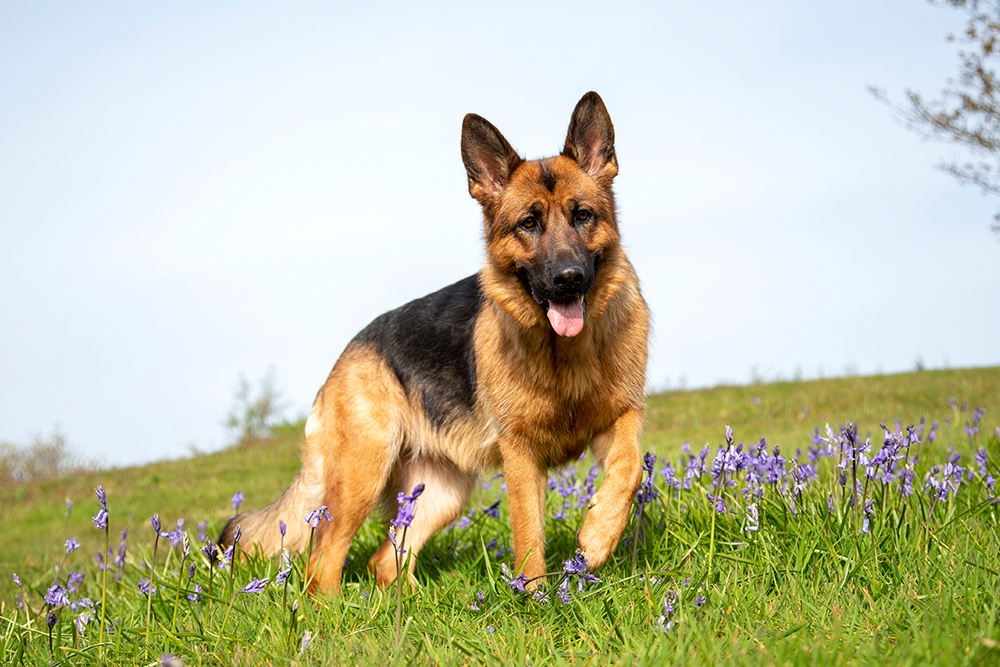
The German Shepherd is a versatile and intelligent dog breed with a strong work ethic and a loyal nature. Here are some key characteristics and traits of German Shepherds:
– Size: German Shepherds are large dogs, known for their strong and muscular bodies.
– Coat: They have a double coat, consisting of a dense, straight or slightly wavy outer coat and a soft undercoat. The color patterns include black and tan, sable, and solid black.
– Temperament: German Shepherds are intelligent, loyal, and energetic. They are confident, courageous, and have a well-balanced nature. They can be aloof or reserved around strangers due to their guarding instincts.
– Trainability: German Shepherds are highly trainable and eager to please. They are capable of learning many commands and are often used as service, military, and assistance dogs.
– Exercise: German Shepherds are active dogs that require ample daily exercise to prevent them from becoming mischievous or destructive. Adult dogs should have at least 2 hours of exercise per day.
– Health: German Shepherds may be prone to genetic disorders like hip dysplasia and can sometimes suffer from gastrointestinal disorders. Regular grooming is necessary due to their thick coat.
German Shepherds are excellent family pets if you have the time and dedication to invest in their training and exercise needs. They are loving and loyal to their families and can also serve as great guard dogs, protecting your house and family from intruders.
Poodle
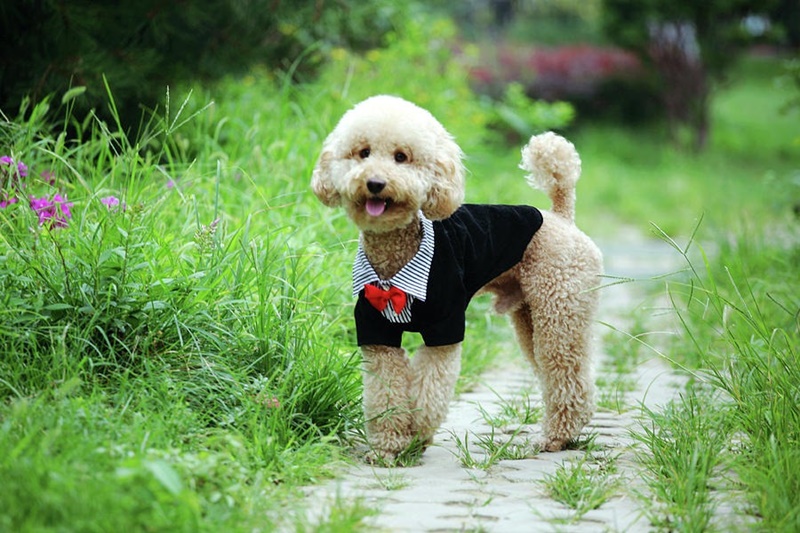
The Poodle is a breed of water dog that is highly intelligent, energetic, and sociable. It is divided into four varieties based on size: Standard Poodle, Medium Poodle, Miniature Poodle, and Toy Poodle. The Fédération Cynologique Internationale (FCI) breed standard provides the following height ranges for each variety:
– Standard Poodle: 45-62 centimeters (18-24 inches)
– Medium Poodle: 35-45 centimeters (14-18 inches)
– Miniature Poodle: 28-35 centimeters (11-14 inches)
– Toy Poodle: 24-28 centimeters (9.4-11.0 inches)
The Poodle is an active and athletic breed, with the varieties differing mostly by size. They require regular physical and intellectual activities. Shyness or sharpness is considered a serious fault in the breed.
Poodles have a distinctive curly, low-shedding coat that consists of a woolly undercoat and a dense wiry topcoat. The coat can be groomed in various styles, including the traditional “poodle clip” and the corded coat. The breed’s coat should be solid, not variegated, and may come in a variety of colors, such as gray, white, black, brown, apricot, and cream.
The Poodle is one of the most popular breeds in the world, known as a great companion to people of any age or activity level. They are people-friendly dogs who want to stay close to their families and are always up for a good game.
Poodles are not particularly territorial, making them bad watchdogs, but they will protect their owners and families when there is a clear danger.
Bulldog
The Bulldog, also known as the English Bulldog or British Bulldog, is a medium-sized, muscular dog with a distinctive appearance. Here are some key characteristics of the Bulldog:
– Size: Bulldogs typically weigh around 40-55 pounds (18-25 kilograms).
– Appearance: They have large heads with thick folds of skin around the face and shoulders, and a relatively flat face with a protruding lower jaw. The breed’s distinctive appearance has led to significant health issues, including brachycephalia, hip dysplasia, heat sensitivity, and skin infections.
– Temperament: Bulldogs are bred for appearance and friendliness, and they are known for their easygoing and friendly nature. They are often used as mascots by universities, sports teams, and other organizations.
– Exercise and Diet: While Bulldogs may have a laid-back personality, they still require regular moderate exercise, such as brisk walks, and a careful diet to stay trim.
Despite their historical association with determination, strength, and courage, Bulldogs are not suited for significant physical exertion in their modern-day role as companion animals. They are people-friendly dogs that can make excellent family pets due to their friendly and easygoing nature.
Rottweiler
The Rottweiler is a robust working breed of great strength, descended from the mastiffs of the Roman legions. They are known for their solid strength, blocky build, and massive heads.
Rottweilers have a short, dense, and double-coated fur, usually black with tan markings. Their tails are docked very short, ideally one to two vertebrae long.
Here are some key characteristics and traits of Rottweilers:
– Temperament: Rottweilers are calm, confident, and courageous, never shy. They have a self-assured aloofness and don’t make friends with people immediately or indiscriminately. Rottweilers exhibit a “wait-and-see” attitude when confronted with new people and situations. With their family, they are affectionate and often follow them around the house. Rottweilers have an inherent desire to protect their family and property but should never be aggressive toward people without cause.
– Socialization: Well-socialized Rottweilers get along nicely with people and other dogs. Early socialization and proper training are essential to ensure they remain well-mannered and well-adjusted around people and other animals.
– Intelligence and Adaptability: Rottweilers are smart and adaptable with a strong work ethic. They are among the most popular dog breeds in the United States due to their amazing guard dog abilities, intelligence, and ease of training.
– Size: Male Rottweilers typically weigh between 85-135 lbs and stand 26 inches tall at the withers, while females weigh between 80-100 lbs and stand 24 inches tall at the withers.
– Exercise and Energy Level: Rottweilers are active dogs that require more than 40 minutes of exercise per day. They have a high energy level and are best suited for active and experienced pet parents.
Read more : Why Is My Dog Licking My Other Dog?
– Guarding Instinct: Rottweilers have a natural instinct to protect their family and territory. This makes them successful not only in police, military, and customs work but also as family friends and protectors.
– Grooming: Rottweilers have low overall grooming needs. Their short, dense, and harsh coat requires minimal maintenance.
Beagle
The Beagle is a small to medium-sized dog breed known for its friendly and playful personality. Here are some key characteristics of Beagles:
– Size: Beagles are 13-15 inches tall at the shoulder and weigh 20-30 pounds.
– Coat: They have a short, dense coat that comes in a variety of colors, including white, black, brown, and tan.
– Temperament: Beagles are friendly, gentle, outgoing, and playful. They are known for their love of food and can be highly food-focused.
– Intelligence: Beagles are considered to be medium in terms of intelligence.
– Trainability: Due to their independence and distractibility, Beagles can be a bit challenging to train.
– Exercise Needs: Beagles are energetic and require regular exercise to stay happy and healthy.
– Scent Hound Nature: Beagles have a keen sense of smell and are always close to the ground, following interesting trails.
– Good with Other Pets and Children: Beagles are generally good with other animals and children, as they were bred to hunt alongside other dogs.
– Prevent Wandering: Beagles are curious and have a tendency to roam, so it’s important to keep them contained in a fenced-in yard or on a leash when outside of the house.
Beagles are cheerful, affectionate dogs that prefer company and may become destructive or bark excessively if left alone for long periods of time. They are not known for being good guard dogs.
Beagles have a lifespan of 10-15 years and are generally healthy, although they may be prone to hip dysplasia, thyroid issues, and ear infections.
Dachshund
The Dachshund, also known as the wiener dog, badger dog, doxie, and sausage dog, is a short-legged, long-bodied, hound-type dog breed. Here are some key characteristics and facts about Dachshunds:
– Origin: The Dachshund was created in Germany and includes elements of German, French, and English hounds and terriers in its breeding. The German word “Dachshund” means “badger dog,” derived from “Dachs” (badger) and “Hund” (dog, hound).
– Appearance: Dachshunds have a long body, short legs, a deep chest, a tapering muzzle, and long ears. They come in three coat types: smooth-haired, wire-haired, and long-haired. The coloration of Dachshunds can vary.
– Hunting Background: Dachshunds were originally bred as scent hound dogs to hunt badgers and other tunneling animals, rabbits, and foxes. They were even used in packs to trail wild boar. Today, their versatility makes them suitable for various tasks.
– Temperament: Dachshunds are known for their friendly and adventurous personality. They can be brave to the point of rashness and a bit stubborn. Their intelligence often leads them to have their own ideas about playtime rules.
– Famous Owners: Dachshunds have been kept by royal courts all over Europe, including that of Queen Victoria. They were also the prized pets of Andy Warhol, Joan Crawford, and Pablo Picasso, who had a Dachshund named Lump.
– Health Concerns: Dachshunds are prone to intervertebral disk disease (IVDD), a condition that can cause pain and even paralysis. This is due to a genetic component in their short-legged structure. Regular exercise and proper care can help mitigate these risks.
Siberian Husky
The Siberian Husky is a medium-sized dog breed known for its friendly and outgoing nature. Here are some key characteristics and traits of Siberian Huskies:
– Appearance: Siberian Huskies have a thick double coat that comes in a variety of colors, including black, gray, white, and tan. They have erect ears and striking almond-shaped eyes that can be brown or blue. They are graceful and athletic dogs, with a height range of 20-23.5 inches and a weight range of 35-60 pounds.
– Temperament: Siberian Huskies are known for their friendly and outgoing nature. They are intelligent, independent, and can have a mischievous streak. They usually get along well with people and other dogs. They are not known for being good guard dogs.
– Trainability: Siberian Huskies can be challenging to train due to their independent nature. They require firm, gentle training from puppyhood.
– Exercise Needs: Siberian Huskies are active dogs that require at least 40 minutes of exercise per day. They have a high energy level and are best suited for active and experienced pet parents.
– Health Concerns: Siberian Huskies are generally a healthy breed, but they can be prone to certain conditions like hip dysplasia and eye issues. Regular exercise and a well-balanced diet are essential for their overall health.
Siberian Huskies are friendly and intelligent dogs that make great family pets if you have the time and dedication to invest in their training and exercise needs. They are known for their endurance and love of running, making them great companions for outdoor activities like hiking and jogging.
FAQS
1. What are the most common types of dogs for 2023?
The most common types of dogs for 2023 include Labrador Retrievers, Bulldogs, Rottweilers, German Shepherds, Dachshunds, Boxers, Doberman Pinschers, Great Danes, Siberian Huskies, French Bulldogs, Golden Retrievers, Poodles, Beagles, German Shorthaired Pointers, and Australian Shepherds.
2. What are the characteristics of a Labrador Retriever?
Labrador Retrievers are friendly, outgoing, and have a gentle nature. They are often described as one of the most family-friendly dog breeds and are great with children and other pets. They are intelligent and highly trainable, with a high energy level and a need for regular exercise and mental stimulation.
3. What are the characteristics of a Rottweiler?
Rottweilers are calm, confident, and courageous, with a self-assured aloofness. They are intelligent and adaptable with a strong work ethic. They are active dogs that require ample daily exercise and are known for their guarding instincts.
4. What are the characteristics of a Dachshund?
Dachshunds are friendly and adventurous dogs with a hunting background. They have a long body, short legs, and a tapering muzzle. They come in three coat types: smooth-haired, wire-haired, and long-haired. They are known for their unique personalities and can make great companions for any family.
5. What are the characteristics of a Siberian Husky?
Siberian Huskies are friendly and outgoing dogs that are known for their endurance and love of running. They have a thick double coat that comes in a variety of colors and require regular exercise to stay happy and healthy. They are intelligent and adaptable with a high energy level.
6. Are mixed breed dogs healthier than purebred dogs?
Mixed breed dogs have a much more diverse genetic pool, so even if one dog has a health issue, chances are it will disappear even within the next generation. On average, it has been discovered that many mixed breed dog’s life expectancies are longer than that of a purebred dog. However, a mixed breed dog’s lifespan can be affected by a long list of items, including overall health, preexisting medical conditions, living and environmental situations, and their play, food, and exercise routine.
7. What are the seven major dog groups?
The seven major dog groups are Working, Herding, Toy, Hound, Sporting, Non-Sporting, and Terrier. Each group features breeds that were bred for specific genetic traits, from personality traits to physical features.
Source: https://petstutorial.com
Category: DOGS


